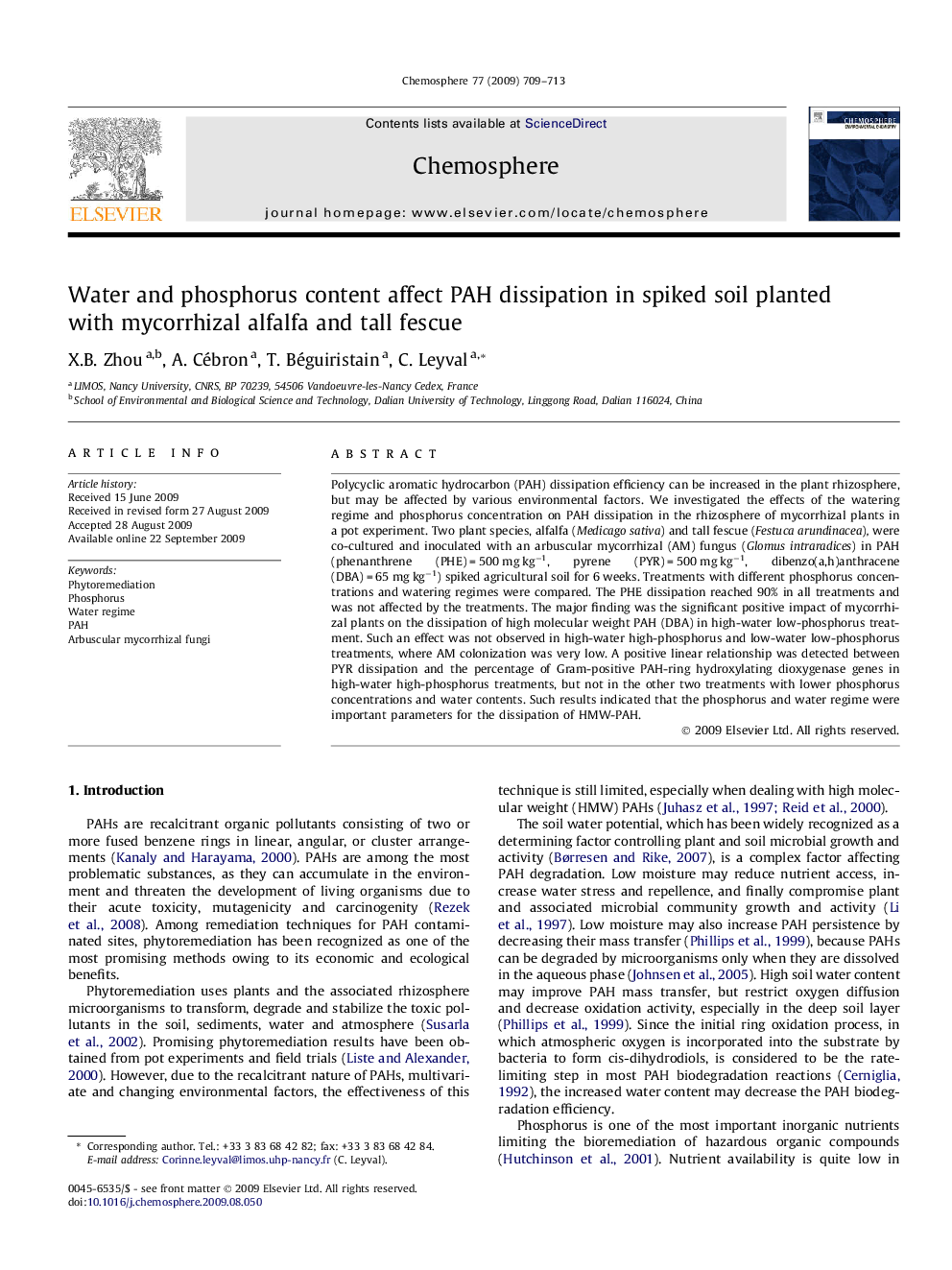| Article ID | Journal | Published Year | Pages | File Type |
|---|---|---|---|---|
| 4412569 | Chemosphere | 2009 | 5 Pages |
Polycyclic aromatic hydrocarbon (PAH) dissipation efficiency can be increased in the plant rhizosphere, but may be affected by various environmental factors. We investigated the effects of the watering regime and phosphorus concentration on PAH dissipation in the rhizosphere of mycorrhizal plants in a pot experiment. Two plant species, alfalfa (Medicago sativa) and tall fescue (Festuca arundinacea), were co-cultured and inoculated with an arbuscular mycorrhizal (AM) fungus (Glomus intraradices) in PAH (phenanthrene (PHE) = 500 mg kg−1, pyrene (PYR) = 500 mg kg−1, dibenzo(a,h)anthracene (DBA) = 65 mg kg−1) spiked agricultural soil for 6 weeks. Treatments with different phosphorus concentrations and watering regimes were compared. The PHE dissipation reached 90% in all treatments and was not affected by the treatments. The major finding was the significant positive impact of mycorrhizal plants on the dissipation of high molecular weight PAH (DBA) in high-water low-phosphorus treatment. Such an effect was not observed in high-water high-phosphorus and low-water low-phosphorus treatments, where AM colonization was very low. A positive linear relationship was detected between PYR dissipation and the percentage of Gram-positive PAH-ring hydroxylating dioxygenase genes in high-water high-phosphorus treatments, but not in the other two treatments with lower phosphorus concentrations and water contents. Such results indicated that the phosphorus and water regime were important parameters for the dissipation of HMW-PAH.
